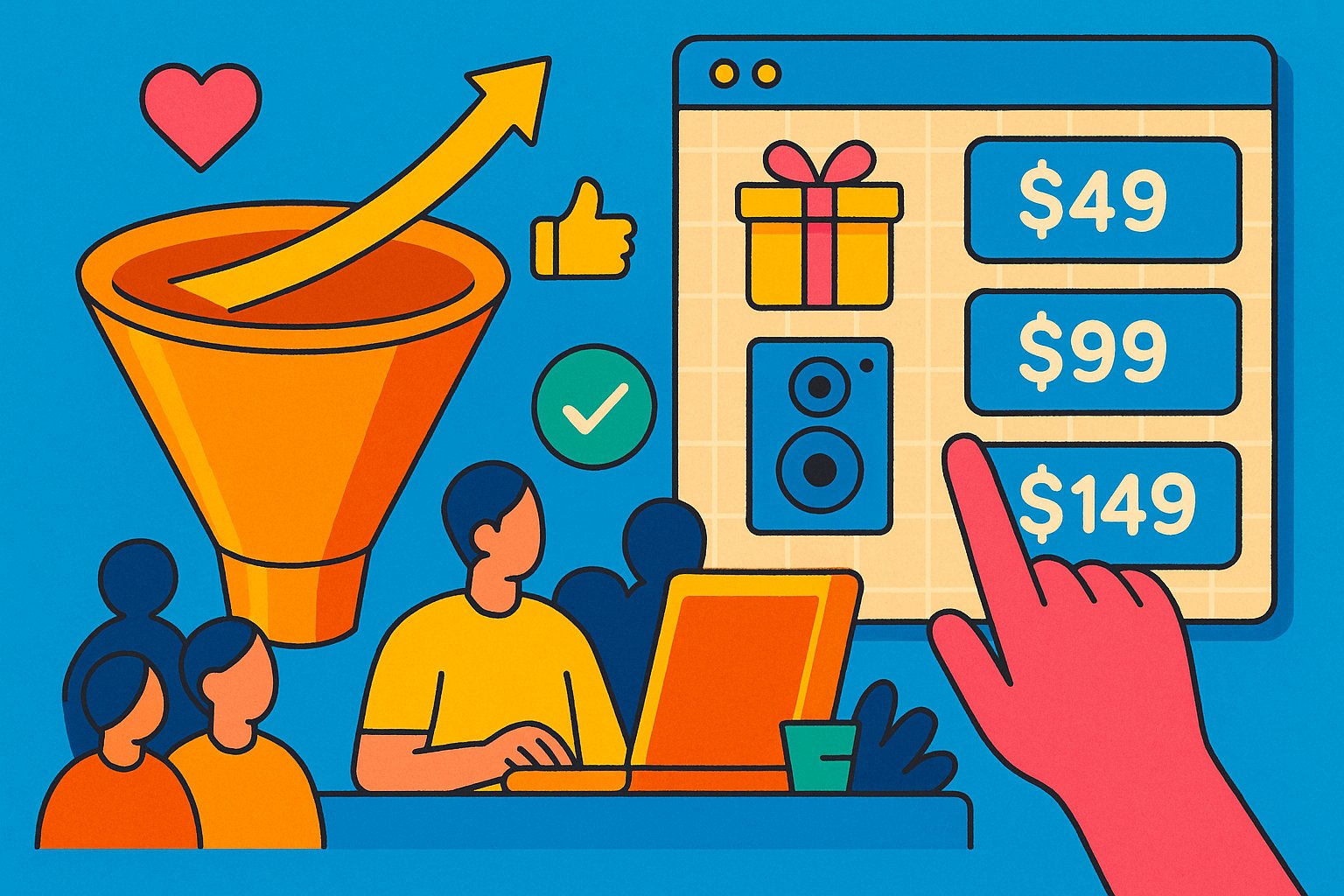Reward Tier Foundations
Launching a reward-based crowdfunding campaign is akin to unveiling a storefront in a bustling marketplace: your reward tiers serve as eye-catching window displays that compel passersby to pause, explore, and ultimately invest. From the moment a potential backer lands on your campaign page, they must immediately understand both your project’s mission and the value each tier offers. Begin by framing your narrative in a way that highlights why your vision matters—whether you’re solving a common problem, introducing innovation to an underserved community, or championing a cause that resonates widely. This brief but impactful introduction establishes emotional buy-in, positioning backers not merely as customers but as partners in a shared journey.
Next, present your entry-level tier, designed to minimize barriers to participation. Offer something that costs little to fulfill—such as a personalized digital thank-you, inclusion on a backer acknowledgment page, or early access to campaign updates. These symbolic gestures allow supporters to feel connected without overcommitting financially. Once you’ve engaged Altruistic backers who care about affiliation and cause, introduce your mid-range tiers. Craft these so that the perceived value dramatically outweighs the cost. For instance, if your product is set to retail at $100, an early-bird tier priced at $50 should include the product plus a minor bonus—perhaps a digital booklet or a unique sticker—thereby reinforcing a tangible reward mindset.
Finally, position your premium tiers as aspirational experiences or collectibles that offer genuine exclusivity. Limit these slots to a small number—say, 20–30 patrons—promising personalized deliverables like signed prototypes, virtual workshops, or bespoke merchandise. Emphasize scarcity by displaying real-time counters to show remaining availability. Throughout this foundational phase, maintain full transparency about production timelines, potential delays, and shipping estimates. By marrying an authentic narrative with clear, realistic commitments, you foster immediate trust. Backers gain confidence that they know exactly what they’re supporting and how it aligns with your overarching mission. This strategic groundwork ensures that each subsequent tier feels like a logical and enticing step forward in the campaign’s narrative, driving higher conversion from the outset.
Decoding Backer Motivations
Every pledged dollar originates from a backer driven by a unique blend of motivations—emotional, pragmatic, or social—that shape their decision to support your project. To optimize reward tiers effectively, begin by categorizing these motivations into distinct personas. First, the Altruist seeks meaningful alignment with your cause. They respond to low-cost, high-emotional-impact tiers—digital shout-outs, social media mentions, or exclusive behind-the-scenes newsletters—because they value the sense of contributing to something larger than themselves. Second, the Value Seeker is transaction-oriented. They ask, “What am I getting in exchange for my pledge?” Mid-tier offerings—such as an early-bird discount on your flagship product bundled with a small bonus—must clearly communicate a cost-benefit advantage. By showing precise retail equivalents, you tap into their desire for tangible returns.
Third, the Insider craves exclusivity and status. They gravitate toward limited-quantity tiers offering VIP experiences—signed prototypes, private video calls, or personalized merchandise. For these backers, belonging to a select circle carries social capital. Present such tiers as “Founders’ Circle” or “VIP Collector’s Edition” with clearly stated numeric caps and real-time availability counters, leveraging urgency through ethical scarcity. Gaining direct input from your emerging audience early—via social media polls, email surveys, or community discussions—enables you to validate these personas and refine your tier offerings. When you demonstrate that you understand and cater to each backer segment, you foster a sense of co-creation. This collaborative approach not only strengthens conversion rates but also builds a cadre of enthusiastic advocates who feel personally invested in your campaign’s success.
Structuring Tiers for Clarity
A well-organized tier structure functions like a clear roadmap, guiding backers smoothly from low-commitment entries to high-value premium options without overwhelming them. Begin by capping your total number of tiers at nine or fewer; presenting too many choices within a narrow price range leads to decision fatigue. Instead, aim for three distinct clusters: entry-level, mid-range, and premium tiers. Keep entry tiers priced between $5 and $25, focusing on simple, emotionally resonant rewards—digital wallpapers, a thank-you video, or public name recognition. By making this tier easy to understand and virtually risk-free, you encourage first-time supporters to participate without hesitation.
Designate your mid-range tiers between $30 and $75, targeting Value Seekers. Highlight a substantial retail discount—if your product will retail at $100, offer it to backers at $50, combined with a complementary bonus like a branded keychain or digital artbook. Price these tiers with psychological anchors—$49 instead of $50 or $74 instead of $75—to tap into backers’ aversion to round numbers. Use visual cues—subtle badges or color accents—to draw attention to the “most popular” mid-tier option, nudging backers intuitively toward what feels like the best bang for their buck.
Finally, allocate premium tiers above $100, reserving them for Insiders who seek exclusivity. Limit these to 10–20 spots and package them with personalized perks: signed prototypes, a video call with the founder, or a workshop invitation. Clearly indicate remaining availability—“5 spots left”—to instill urgency. Present precise descriptions of the unique benefits to justify the higher cost. By structuring tiers with distinct, logical progression and using visual and psychological cues effectively, you reduce confusion, streamline decision-making, and motivate backers to climb the value ladder.
Crafting Perceived Value
The linchpin of a successful reward tier lies in its perceived value—backers must feel that they receive more than they pay. Achieving this requires a blend of evocative storytelling and grounded feasibility. Start by enumerating every component of a tier—core product, accessories, and any digital or experiential add-ons. Calculate direct costs meticulously: manufacturing, packaging, shipping, and platform fees. Then overlay a clear retail-equivalent value. If a tier includes your upcoming gadget plus a branded accessory, state that its combined retail price is $120, yet you’re offering it at $60 for backers. This transparent framing demonstrates a tangible cost-saving while reinforcing the bespoke nature of the reward.
Use vivid language to bring each reward to life. Instead of “Includes a custom T-shirt,” describe the T-shirt’s high-quality, sustainably sourced fabric, the exclusive artwork printed using eco-friendly inks, and how wearing it signifies membership in your inner circle. If a digital element—like a downloadable artbook—is part of the tier, mention the number of pages, the behind-the-scenes process depicted, and any bonus commentary from the creative team. These sensory details transform a mundane bullet list into an immersive narrative.
However, guard against overpromising. If your manufacturing timeline is subject to potential delays—perhaps due to supplier shortages—disclose that upfront: “We expect production by September 2024, but minor color variations may occur due to handcrafted elements.” This caveat sets realistic expectations, preventing post-pledge disillusionment. Combine cost-effective emotional incentives—such as personalized thank-you videos or exclusive update access—with tangible, budgeted components. By ensuring that the perceived value dramatically exceeds the pledge cost, while remaining operationally viable, you strike the ideal balance that motivates backers to commit at higher levels.
Ethical Scarcity and Exclusivity
Scarcity and exclusivity are powerful psychological levers that ignite urgency and elevate perceived prestige. Used ethically, they can significantly boost conversions without backfiring. Begin by designating certain tiers as “Limited Edition,” with a fixed number of slots—“Only 100 Early-Bird Kits” or “25 VIP Backers.” Display a real-time counter that updates as backers pledge, visually reinforcing that quantity is dwindling. This transparent practice taps into the fear of missing out, motivating backers to act swiftly. However, accuracy is paramount: ensure that your counter updates instantly and that you never oversell beyond your promised limit. If you need to expand due to overwhelming demand, explain clearly: “Based on your incredible support, we’re adding 20 more slots to our VIP tier—act fast, as these will go quickly!” This maintains trust while capitalizing on heightened interest.
Exclusivity extends beyond numeric caps. Offer experiences or items that simply cannot be purchased post-campaign. For example, provide a “Founder’s Pass” tier that includes a one-on-one Skype session with the project team, early access to beta tests, and a limited-edition prototype with serial numbering. Label tiers with aspirational names—“Insider Circle,” “Pioneer Edition,” or “Collector’s Legacy”—to communicate belonging to a select group. Reinforce exclusivity through community-building: grant premium backers access to a private Slack channel or Discord server where they can share feedback and receive direct insights. When backers feel that they’re part of an elite cohort, their perceived social status increases, driving them toward those higher-priced tiers.
Balance scarcity with fairness. If a tier sells out, confirm that no additional slots exist unless you explicitly announce an extension. Maintain consistent messaging around exclusivity—any adjustments should be framed as a direct response to backer demand rather than arbitrary marketing tactics. By wielding scarcity and exclusivity responsibly, you create genuine urgency, amplify social proof, and elevate your campaign’s prestige, all while preserving backer trust.
Testing and Iterating Reward Options
Optimizing reward tiers is a dynamic, data-informed process, not a one-time activity. Once your campaign goes live, collect and analyze real-time performance data to make timely refinements. Begin with pre-launch A/B testing: craft two variations of your tier lineup—altering tier names, price points, or bonus incentives—and present them to segmented groups within your email list or social media followers. Compare click-through rates, time-on-tier metrics, and direct feedback. For instance, test whether “Early-Bird Pioneer” at $49 outperforms “Founders’ Special” at $45. Use these insights to finalize your public offering before the full launch.
During the live campaign, monitor platform analytics closely to track which tiers attract the most pledges and which remain stagnant. If a mid-tier at $60 sees little traction while a $50 tier is consistently snapped up, assess whether the $10 price gap is too steep or if the perceived value needs bolstering. Consider adjusting the tier by adding a cost-effective perk—such as a downloadable wallpaper—or shifting the price to $58 to test sensitivity. Implement these changes in small increments, ideally no more than once per week, to isolate the impact of each tweak.
Qualitative feedback is equally invaluable. Solicit comments directly—“What motivated you to choose your pledge level?”—via brief in-campaign surveys or community polls. This dialogue reveals backers’ underlying thought processes and flags content gaps. If multiple backers comment that a tier’s description lacks clarity, refine its messaging to highlight the exact benefits and address any ambiguities. When you make changes, transparently communicate the reasons: “Thanks to your input, we’ve added an exclusive prototype sticker to our $60 tier, enhancing its appeal.” This inclusive approach not only fosters community engagement but also ensures that your reward structure evolves in harmony with backer expectations, maximizing conversions until the final funding hour.
Logistics and Delivery Planning
Even the most compelling reward tiers crumble if logistical realities aren’t addressed in tandem. From day one, integrate shipping and fulfillment considerations into your tier design, ensuring each offering is viable to deliver on time and within budget. Physical items—especially those that are bulky, fragile, or subject to customs regulations—require precise planning. Solicit shipping quotes from multiple carriers (USPS, UPS, DHL) and consider using a fulfillment partner with regional warehouses. If a significant portion of your backers hail from Europe or Asia, storing inventory in local hubs reduces transit times and sidesteps unpredictable customs fees.
Design packaging that balances protection with minimal weight. For fragile items, use recycled foam inserts or collapsible cardboard to secure products without adding excessive bulk. Combine multiple items—T-shirts, posters, small accessories—into compact flat-pack envelopes to minimize dimensional weight. These small efficiencies can slash shipping costs dramatically when multiplied across hundreds or thousands of orders. For digital rewards—such as downloadable artbooks or exclusive video content—implement an automated delivery system via email or secure cloud links. Test every link to ensure compatibility across devices and platforms before the campaign launches.
Collect accurate shipping addresses early through integrated pledge-management software. By locking in address details before production begins, you reduce the risk of unfulfilled orders due to late changes. If you anticipate potential delays—say, due to seasonal carrier surges—inform backers proactively: “Shipping is scheduled for November 2024; however, international orders may experience an additional 2–3 weeks due to customs processing.” This transparency sets realistic expectations, lessening post-pledge anxiety. Finally, build a small contingency fund—typically 10–15% of your budget—to cover unexpected spikes in shipping rates, packaging shortages, or returns. By weaving logistics and delivery planning into every reward tier, you demonstrate professionalism, safeguard margins, and maintain backer trust through reliable fulfillment.
Sustaining Campaign Success
Optimizing reward tiers for increased crowdfunding conversions demands a multifaceted approach that blends strategic psychology, clear structure, and rigorous operational planning. From the moment potential backers encounter your opening narrative, each tier must speak directly to their motivations—be it emotional connection, tangible value, or exclusive status. By structuring tiers with logical progression, emphasizing perceived value through vivid storytelling, and leveraging ethical scarcity, you create a compelling journey that guides supporters toward higher commitments. Continuous testing and real-time iteration keep your offerings aligned with backer feedback and market dynamics, maximizing conversions until your funding window closes.
Yet the impact of optimized reward tiers extends well beyond initial pledges. When you pair carefully calculated logistics and transparent delivery timelines with ongoing post-campaign communications—personalized thank-you notes, exclusive updates for digital tiers, and loyalty perks for top backers—you transform one-time supporters into lifelong advocates. This sustained engagement fuels word-of-mouth buzz, bolsters future campaign credibility, and establishes a resilient community around your brand. By marrying creative ingenuity with precise execution, you set the stage for not only hitting your crowdfunding goals but also laying the groundwork for continued growth and lasting impact.




